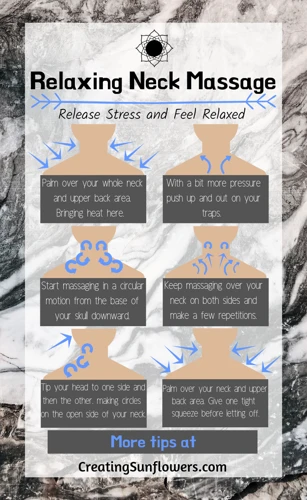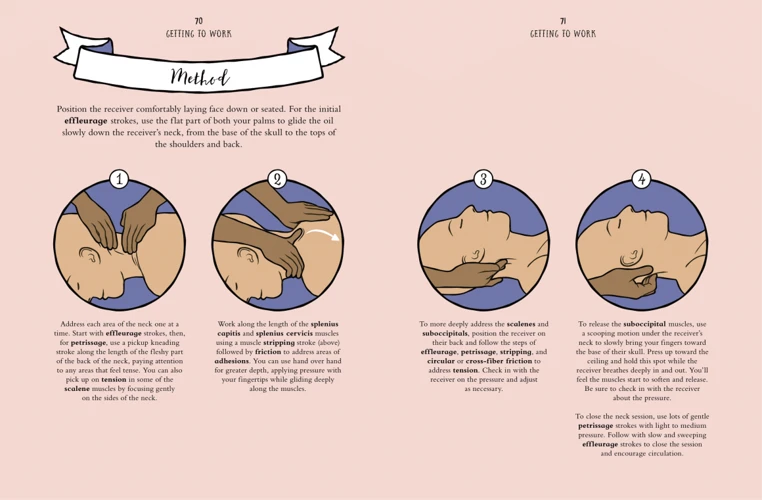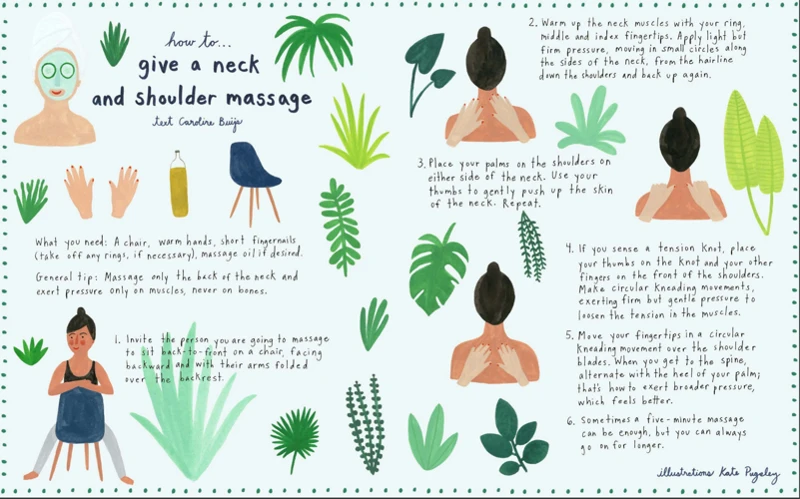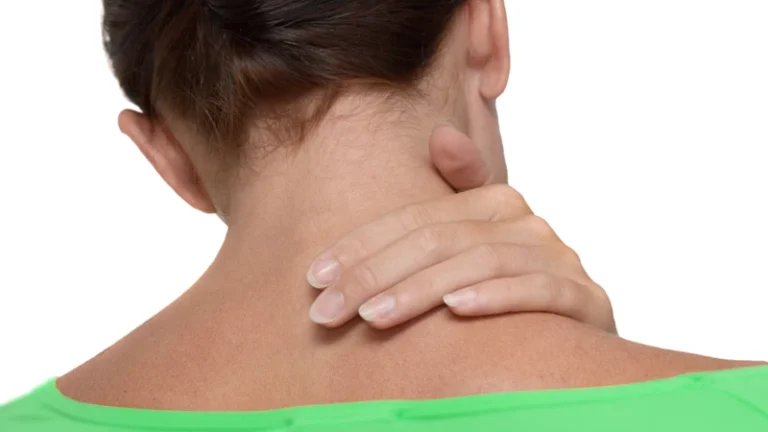Are you looking for tips on how to give a good back and neck massage? If so, then you’ve come to the right place! In this article, you’ll learn how to give a relaxing back and neck massage to your partner, friend, or family member. We will discuss the best techniques, the right amount of pressure, and some helpful tips and tricks for a stress-free experience. So, read on and learn how to give a soothing and relaxing back and neck massage.
Contents
Benefits of Back and Neck Massages

Back and neck massages offer a range of physical and psychological benefits. Physically, they can help to relieve tension and reduce pain, improve joint mobility and reduce stiffness. They can also help to reduce inflammation, improve circulation and boost the immune system. Psychologically, they can help to reduce stress, improve sleep, and increase feelings of relaxation and well-being.
How to Massage a Back and Shoulders
To give a relaxing back and neck massage, start by applying gentle pressure with your hands in a circular motion on the back and shoulders. Move slowly up and down the spine, using your hands and fingers to knead the muscles and release tension. Continue to apply pressure as you move up and down the spine, and make sure to pause and focus on any areas that feel particularly tight. Once you have massaged the entire back and neck, finish off with a few gentle strokes and end with a light massage of the shoulders.
Preparing to Give a Back and Neck Massage

Gather Supplies
When preparing to give a relaxing back and neck massage, the first step is to gather the necessary supplies. This includes a massage table, massage oil, towels, and a comfortable environment. It’s important to have a space that is free of distractions and allows for privacy.
Set the Atmosphere
Creating a calming atmosphere is essential for a stress-free massage experience. To do this, you should dim the lights, light some candles, and play soothing music. You can also use essential oils to create an even more relaxing atmosphere.
How to Properly Massage Back and Shoulders
Once everything is prepared, it’s time to start the massage. Begin by warming up the muscles with gentle strokes and kneading. You should also use circular motions and deep tissue massage techniques to target the knots and tightness in the back and shoulders. It’s important to remember to use your full body weight to apply the right amount of pressure. Finish the massage by using light strokes and long, flowing movements.
Giving a Back and Neck Massage

Start with the Neck
When giving a relaxing back and neck massage, it is important to start from the neck and work your way down. Start by gently cupping the neck and shoulders with your hands, using gentle circular motions. Apply firm pressure to knead the muscles and loosen any tension.
Move to the Shoulders
Once you have finished with the neck, move on to the shoulders. Apply pressure to the underneath of the shoulder blades, and use your thumbs to gently massage the muscles in circular motions. Work your way up the shoulder blades, paying attention to any knots or tension.
Massage the Upper Back
Continue to massage the upper back, using your fingers and thumbs to apply pressure. Start at the base of the neck and work your way down the spine. Use your palms to apply pressure to the larger muscles, such as the trapezius and latissimus dorsi.
Massage the Lower Back
For the lower back, use your knuckles and elbows to apply deep, circular pressure to the muscles. Start at the base of the spine and work your way up, paying attention to any knots or tension.
Finish with the Arms
To finish the massage, use your hands to gently massage each arm, starting at the shoulder and working your way down to the fingertips. Use firm circular motions to apply pressure to the muscles, and use your thumbs to massage the palms.
Aftercare Tips

- Encourage your partner to stay in a comfortable position: Ask your partner to lay down on their back, stomach, or side for a few minutes after the massage. This will help the muscles relax.
- Drink plenty of water: It’s important to stay hydrated after a massage so that the body can flush out toxins released from the muscles.
- Avoid strenuous activity: After a massage, it’s best to avoid strenuous activity such as running, lifting heavy objects, or exercising for at least a few hours. This will help the muscles relax and not become tense again.
- Apply heat: Applying heat to the area after the massage can help soothe the muscles and ease any soreness.
Possible Contraindications
It is important to be aware of any possible contraindications before giving a massage:
- Infectious skin conditions
- Recent or chronic injuries
- Open wounds
- Fractures
- Tumors
- Fever
- Blood clots
- Varicose veins
- Heart disease
- Recent surgery
Always check with your doctor or healthcare provider before giving a massage if you are unsure.
Frequently Asked Questions
What type of massage oil is best to use for a back and neck massage?
Light massage oil is the best option for a back and neck massage, as it is more easily absorbed into the skin without leaving a greasy, sticky residue. Avoid using too much oil, as it can make the massage less effective. Look for oil specifically made for massage, which will be more effective and beneficial. Consider adding a few drops of essential oils to the massage oil for additional therapeutic benefits.
Is it necessary to Use a Massage Table for a Back and Neck Massage?
Using a massage table is not necessary for a back and neck massage, but it can be beneficial. Massage tables provide a comfortable and stable surface, allowing the client to relax more easily. They also provide access to the client’s back and neck, enabling the masseuse to better target the muscles and pressure points. If a massage table is not available, a bed, couch, or other flat surface can be used as a substitute.
How long should a back and neck massage last?
A back and neck massage should last between 10 to 15 minutes. However, the duration may vary depending on the individual and the massage therapist’s experience. Here are some tips to help ensure that the massage lasts for the right amount of time:
- Make sure to communicate with the massage therapist to let him/her know how long you would like the massage to last.
- Be aware of the pressure the massage therapist is applying. If it is too light or too strong, let them know.
- Be sure to let the massage therapist know when to move on to the next area of your body.
- Let the massage therapist know when you feel ready to end the massage.
By following these tips, you can ensure that your massage lasts for the right amount of time, giving you a relaxing and stress-free experience.
Are there any specific techniques that should be used when giving a back and neck massage?
Effleurage Stroke: This technique involves light and gentle sweeping strokes across the back and neck. The strokes should be slow and rhythmic, and should be done with the flat of the hand or fingertips.
Petrissage Stroke: Petrissage is a kneading technique that involves using the palms and fingers to firmly and deeply massage the area.
Friction Stroke: This technique involves using the fingertips to apply circular pressure to the back and neck muscles. It is important to not use too much pressure, as this can cause discomfort.
Tapotement Stroke: Tapotement is a technique that involves tapping or patting on the back and neck muscles. It is important to be gentle and not to use too much pressure.
Are there any potential health risks associated with giving a back and neck massage?
Yes. There can be potential health risks associated with giving a back and neck massage, including:
- Incorrect technique can cause injury such as muscle strain, tendinitis, or nerve damage.
- Pressure that is too intense can cause muscle injury and pain.
- Infection can occur if the massage therapist does not use proper hygiene and sanitation techniques.
- Blood clots can form if massage is done on the neck or head region.
- Spinal cord injury can occur if the massage therapist applies too much pressure.
Therefore, it is important to be aware of these potential health risks and take appropriate precautions to ensure the safety of both the massage therapist and the recipient.
Conclusion
A relaxing back and neck massage can be an effective way to reduce stress and tension. Use slow, gentle movements, apply the right amount of pressure, and have a conversation with the receiver to ensure a stress-free experience. With practice and trial-and-error, anyone can learn the basics of giving a relaxing massage.
References
- Swedish Massage from Massage Envy
- Massage Therapist Career Profile from The Balance Careers

